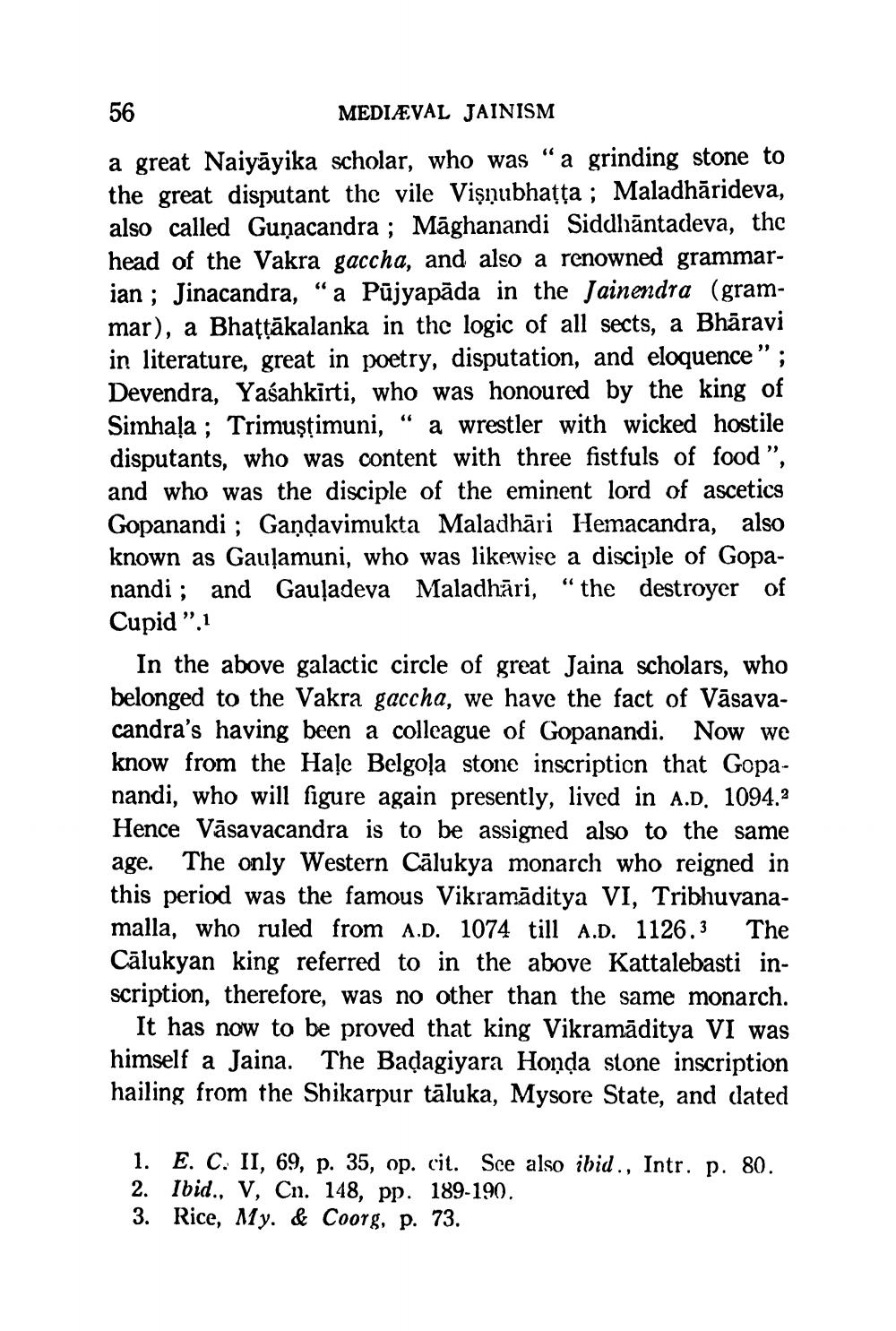________________
56
MEDIÆVAL JAINISM a great Naiyāyika scholar, who was “a grinding stone to the great disputant the vile Vişnubhațţa ; Maladhārideva, also called Guņacandra ; Māghanandi Siddhāntadeva, the head of the Vakra gaccha, and also a renowned grammarian; Jinacandra, “a Pūjyapāda in the Jainendra (grammar), a Bhattākalanka in the logic of all sects, a Bhāravi in literature, great in poetry, disputation, and eloquence"; Devendra, Yasahkirti, who was honoured by the king of Simhaļa ; Trimuștimuni,“ a wrestler with wicked hostile disputants, who was content with three fistfuls of food ”, and who was the disciple of the eminent lord of ascetics Gopanandi ; Gandavimukta Maladhāri Hemacandra, also known as Gauļamuni, who was likewise a disciple of Gopanandi; and Gauļadeva Maladhāri, “the destroyer of Cupid":1
In the above galactic circle of great Jaina scholars, who belonged to the Vakra gaccha, we have the fact of Vāsavacandra's having been a colleague of Gopanandi. Now we know from the Haļe Belgoļa stone inscription that Gopanandi, who will figure again presently, lived in A.D. 1094.3 Hence Vāsavacandra is to be assigned also to the same age. The only Western Cālukya monarch who reigned in this period was the famous Vikramāditya VI, Tribhuvanamalla, who ruled from A.D. 1074 till A.D. 1126.3 The Cālukyan king referred to in the above Kattalebasti inscription, therefore, was no other than the same monarch.
It has now to be proved that king Vikramāditya VI was himself a Jaina. The Badagiyara Honda stone inscription hailing from the Shikarpur tāluka, Mysore State, and dated
1. E. C. II, 69, p. 35, op. cit. See also ibid., Intr. p. 80. 2. Ibid., V, Cn. 148, pp. 189-190. 3. Rice, My. & Coorg, p. 73.




